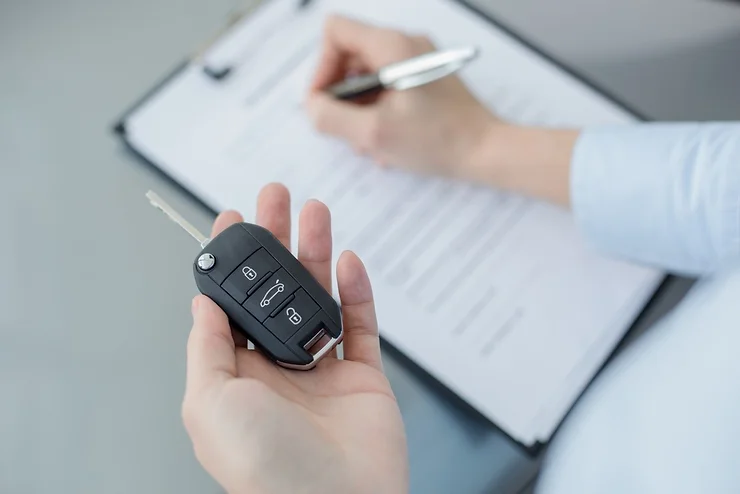Four Pros and Cons of Leasing or Owning your Vehicle
1. You can get substantial tax benefits
When you lease a vehicle, or a fleet of vehicles, the liability isn’t shown on the company account, they are “off balance sheet”. If you borrow money to buy a fleet of vehicles then the liability will show up on the company accounts and as it will be such a large sum of money, it could hinder your chances of getting a credit line in the future. So, leasing is very appealing in that respect.
You can also claim back 50% of the initial and monthly rental, because you are essentially renting the vehicle. And, you can also offset the monthly rentals against corporation tax. How much you can offset depends on how much CO2 your vehicles emit.

But
It can be expensive in the long run
When you lease, you’re basically paying for the use of the vehicle for the first 2 or 3 years of its life – when the car depreciates the most. When your lease is over, you either have to lease another car or purchase one – either way you’re going to have monthly payments for a long time, whereas if you purchased a car to begin with, you would essentially drive it payment-free after you’ve paid off the loans.
2. Fixed Monthly Costs / Some costs are included
How much you pay a month is fixed, irrespective of how much the vehicle depreciates. When you lease a car you are paying for the difference between the purchase price and the residual value, which is how much the vehicle is estimated to be worth at the end of the contract. However, this cost is fixed, regardless if the car depreciates more during the contract than planned. Road tax is often included in the lease which can be useful if you have multiple cars in the fleet as you don’t have to keep track of the road tax payments.
But
Insuring the car can be more expensive / there are administrative fees that add up
Many people are surprised to learn that insuring a leased car can be way more expensive than they thought. Most leasing companies require you to get a higher level of insurance coverage on the vehicle – usually up to $300,000 in liability coverage. This can make your insurance payments a lot higher than if you had purchased a car instead.
There are also a lot of fees associated with leasing a vehicle. There are many fees associated with leasing that you won’t find anywhere else. In order to lease, you’ll need to pay an acquisition fee of at least $400, and a disposition fee of at least $200 at the end of the lease. In addition, there are an assortment of excessive “wear and tear” fees that you could be liable for when you turn in the vehicle. Leasing companies are notorious for charging high fees for small dings and scratches – so you need to be extra careful taking care of the vehicle as you drive. If you do get into an accident though there are some good solutions (e.g. Axioma) to find the best repairers at wholesale prices (irrespective of how large or small your fleet is).
3. It saves time
If you go through a vehicle broker, then they do all the research for you. All you have to do is give your preference in terms of vehicles, your budget and how long you want the vehicles for. They then do the research for you and find the best deal for you while you carry on running your business. Once you have the vehicles, you don’t have to worry about anything. Road tax is often included and if you get a maintenance agreement, then all servicing costs are covered throughout the contract as well.
But
It can be confusing and hard to cancel
Dealers love leasing because most people don’t understand how it works. There are many ways dealers can pad their profits when you lease a car. Unless you’re extremely careful and thorough, you could end up paying a lot more than you should.
Also, leasing is like signing a rental agreement. You can’t just walk away from it – there are stiff penalties if you do. If you purchased a vehicle instead, you could always sell it if you don’t want it anymore. With a lease, it’s practically impossible to terminate.
4. You get a new fleet every couple of years
There are huge advantages to getting a new fleet every few years, and leasing allows you to do this with no problems at all. Not only are new vehicles safer, they are also more economical, more reliable and come with more advanced technology. This, in turn, raises morale, because who doesn’t want a brand new car every few years? It also is great for company image, as it shows that you are doing well enough to have a new fleet of cars every couple of years.
But
You never really own the vehicle
The vehicle is never yours, so you have a limited number of miles that can be driven. Leasing agreements typically have driving limits of between 10,000 and 15,000 miles per year going above these limits will be penalised at a very high rate. Also, you cannot modify the vehicle (for instance if you need to make upgrades to your commercial vehicle) since the car is technically owned by the leasing company.
The verdict
Ultimately leasing a vehicle is great if you want to limit overheads to manage your fleet, and don’t mind paying extra to have someone do it for you. Leasing also provides a natural hedge against vehicle devaluation since you determine the “exit” price up-front, this can be useful in the context of changing regulation (for electric vehicles for instance).
Irrespective of whether you lease or buy, however, most maintenance contracts will not include accidental damage in the lease – so be careful where you source your repair work as this can really add to the cost of owning / operating fleets. Finally, if you or one of the cars in your fleet does have an accident don’t forget to visit Axioma for the first UK wholesale body-shop marketplace.

 Share Post
Share Post





